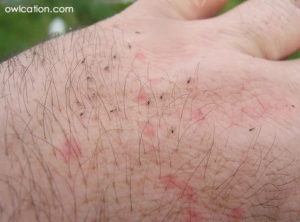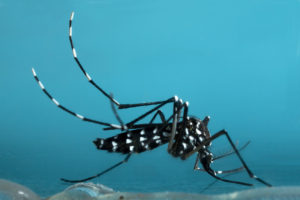Many of us are averse to all flying insects – understandably so. But lumping all flying insects into the same category as mosquitoes is a mistake. Often, other insects are mistaken for mosquitoes. What is the difference? Should we kill them?
By now, most of us are familiar with Central Mass mosquitoes. We know what they look like, we have encountered their bites, as well as the itchiness and redness left behind. If you are lucky, that mosquito bite has not resulted in serious illnesses, such as Zika, West Nile, or heartworm in our pets. Because of our familiarity of the potential negative effects of mosquito bites, we might tend to swat any bug that is flying in close proximity, but is it really necessary?
What are some of the insects that have us asking, “Is that a mosquito?”
Crane flies:
Crane flies are probably more commonly mistaken for mosquitoes than any other insect. Crane flies go by a few nicknames, one being “mosquito hawk.” Even though this name implies that crane flies eat mosquitoes, that is untrue. Crane flies feed mainly on decaying plant life in the larvae stage – but do not eat at all as adults. Even though some crane flies have elongated mouth parts like mosquitoes, they do not bite humans or animals.
Crane flies have long legs, which is where they get their name – resembling long legs of the aviary crane. Their long legs are also often compared to the non-flying “granddaddy long legs” insect. They have smooth wings, differing from mosquitoes’ wings, and they have straight bodies while in a resting position, unlike mosquitoes, who rest in a “hump back” profile.
Crane flies might enter your home due to their attraction to your lights, seeking warmth. If you find one of these monstrous insects flying around inside your home, don’t swat it. Try getting it back outside your home. They mean no harm!
Biting midges:
Oh, boy, if you have encountered a biting midge, you know what a nuisance the are! Also known as “no-see-ums” or “punkies,” these tiny flying biters attack virtually unseen – but do not go unnoticed after they bite! While the most damage they do to humans is leave an itchy reminder of their bite, they can actually transmit diseases to other animals. In the western United States, biting midges are known to transmit Blue Tongue virus to livestock, which is not transmittable to humans.

This is not a mosquito: Biting midges will bite humans, but do not pass diseases to humans.
As biting midges are a nuisance biter, which can cause itching and burning, it is important to use insect repellent when you are going outdoors to places, where they might be found – particularly in wooded areas, or areas with lots of surrounding vegetation. Biting midges are definitely a non-mosquito, biting insect that we want to avoid, and yes, give them a swat!
Protect your Central Mass home from the threat of mosquitoes with professional mosquito control.
While you can only hope to repel mosquitoes when venturing away from your Central Mass home, you can effectively control them with mosquito barrier protection at home! An EPA-registered mosquito spray will eliminate up to 95% of mosquitoes from your property for about three weeks between sprays. This type of mosquito treatment will knock down mosquitoes on contact, and continue to eliminate them with a micro-encapsulated mosquito control formula for weeks after. Professional mosquito treatments will also eliminate biting midges!


